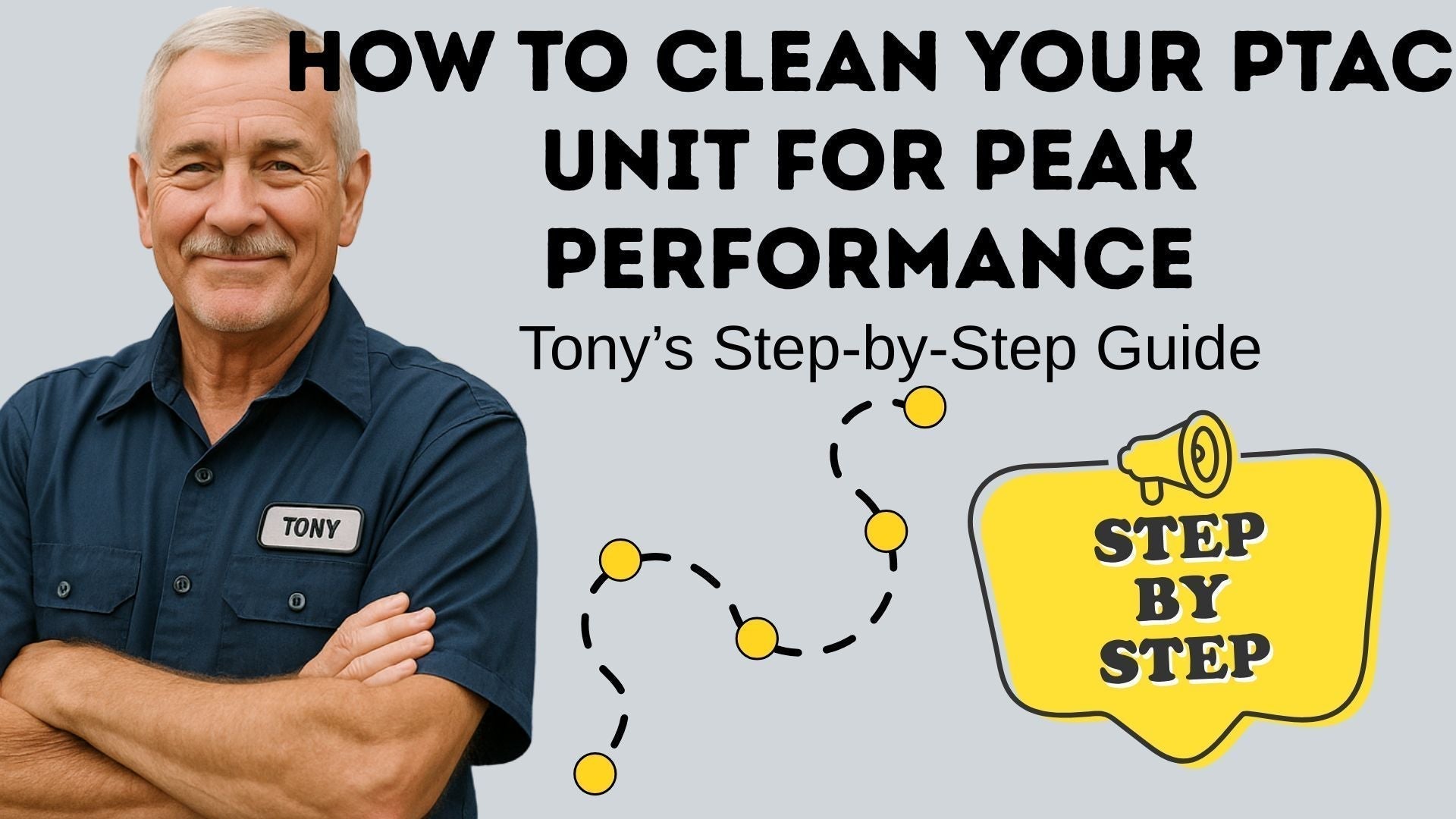🧰 Why Cleaning Matters—And When to Do It
You’d be surprised how many calls I get for “no heat” or “weak cooling,” and the only issue is a dirty filter or coil.
Cleaning your PTAC regularly:
-
Keeps airflow strong
-
Cuts energy bills
-
Prevents mold and mildew
-
Makes the unit last longer
-
Stops that musty smell dead in its tracks
🗓️ Rule of thumb: Clean filters monthly. Deep clean coils and drains twice a year—or more if you're in a high-dust or high-humidity area.
🛠️ Tools You’ll Need
No fancy gear here. Just grab:
-
Vacuum with brush attachment
-
Soft-bristle coil brush or fin comb
-
Spray bottle with mild detergent
-
Microfiber cloths
-
Screwdriver
-
Shop vac (for drain cleaning)
Optional: Coil cleaner or EPA-approved disinfectant if it’s really grimy.
🔍 Step-by-Step: Cleaning Your Amana 14,700 BTU PTAC
Step 1: Turn Off Power
Always unplug the unit or flip the breaker. You don’t want the fan kicking on mid-clean.
Step 2: Clean the Filter
-
Open the front cover.
-
Slide out the filter.
-
Wash with warm water and mild soap.
-
Let it dry completely before reinstalling.
Tony’s Tip: Never use bleach or harsh cleaners—they can damage the filter mesh.
Step 3: Brush the Evaporator Coils (Front)
-
Gently brush the coils vertically to remove dust.
-
Spray with diluted detergent.
-
Wipe with a soft cloth.
Avoid bending the fins! Bent fins block airflow and reduce cooling.
Step 4: Pull Out the Chassis (Deep Clean)
-
Unscrew and slide the main unit out of the sleeve.
-
Vacuum and clean condenser coils on the back.
-
Check for debris inside the cabinet and drainage tray.
-
Use a shop vac to clear the drain hole.
Step 5: Wipe Down the Cabinet and Vents
-
Remove surface grime on louvers and plastic housing.
-
Use a slightly damp microfiber cloth.
-
Dry thoroughly before reassembly.
Step 6: Reassemble and Restore Power
Slide the chassis back in, secure all screws, reinstall the filter, and plug it back in.
Run a test cycle to confirm everything’s working properly.
💡 When to Call a Pro Instead
If you notice:
-
Frozen coils
-
Unusual noises
-
Weak airflow after cleaning
-
Water leaks that persist
…then it might be time to call in a tech (like me).
Some issues like refrigerant leaks, blower motor wear, or thermostat problems aren’t fixable with soap and elbow grease.
🧼 Bonus: Odor Control Tips
PTACs can pick up odors from smoking, cooking, or just stale air. Here’s how to fight back:
-
Spray a disinfectant on the coils (non-corrosive only!)
-
Use carbon-infused filters for odor absorption
-
Leave the unit running on fan-only mode with the window open for 10 minutes
🧾 Keep a Cleaning Log (Especially in Rentals)
If this PTAC is in a hotel, apartment, or Airbnb, document your cleaning:
| Date | What Was Done | Notes |
|---|---|---|
| 03/15/25 | Filter washed, coils brushed | Slight mildew smell gone |
| 06/01/25 | Full deep clean | Drain was partially blocked |
This builds value for resale, keeps tenants happy, and avoids warranty headaches.
🧠 Final Word from Tony
Cleaning your Amana PTAC isn’t rocket science—but doing it regularly makes a big difference in comfort and reliability.
Take 30 minutes a month and show your unit some love. It’ll keep you cool in the summer, warm in the winter, and save you money all year round.
In the Next topic you will read about: What’s the Difference Between PTAC Heat Pump and Electric Heat Backup? Tony Breaks It Down







